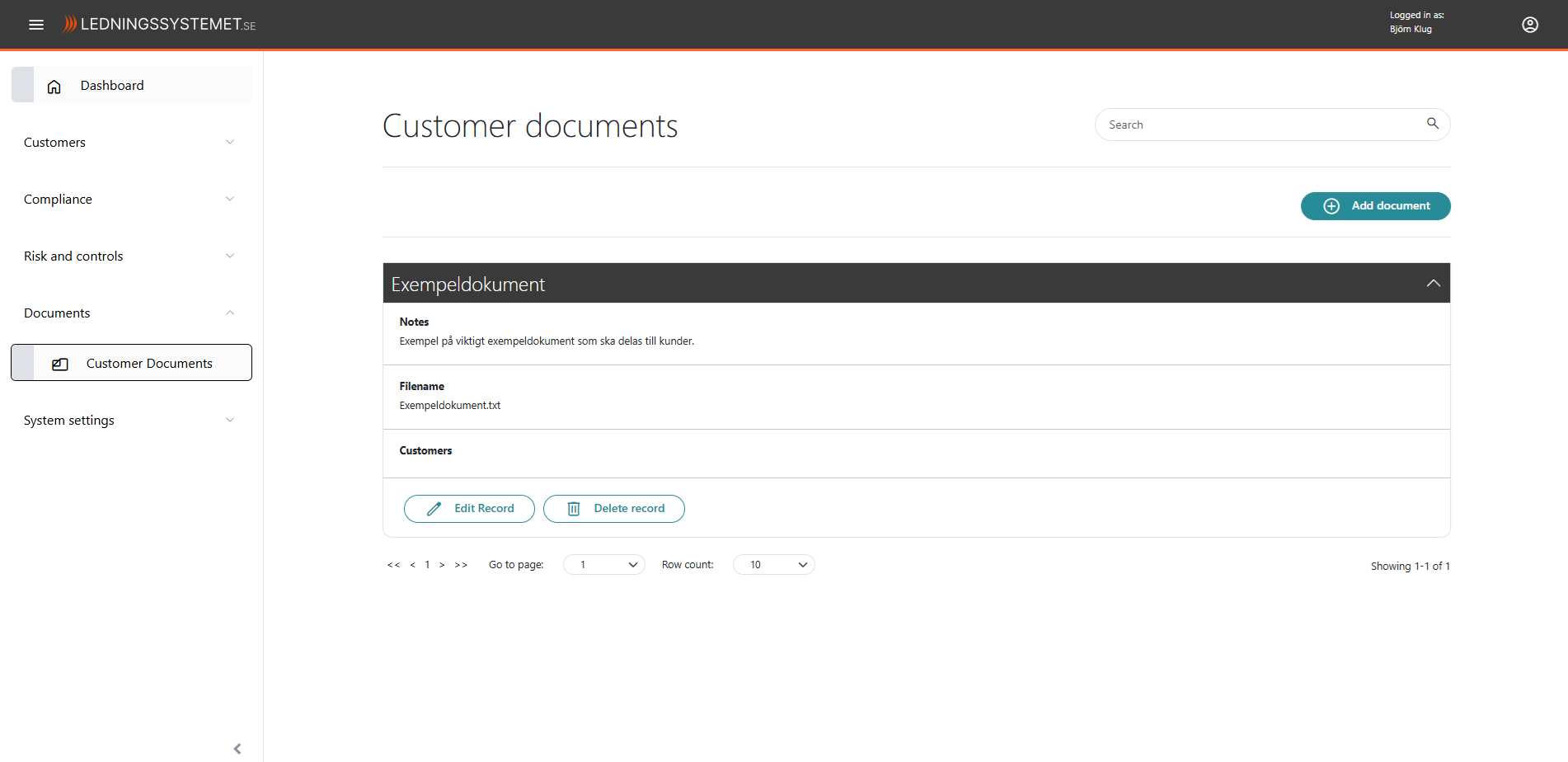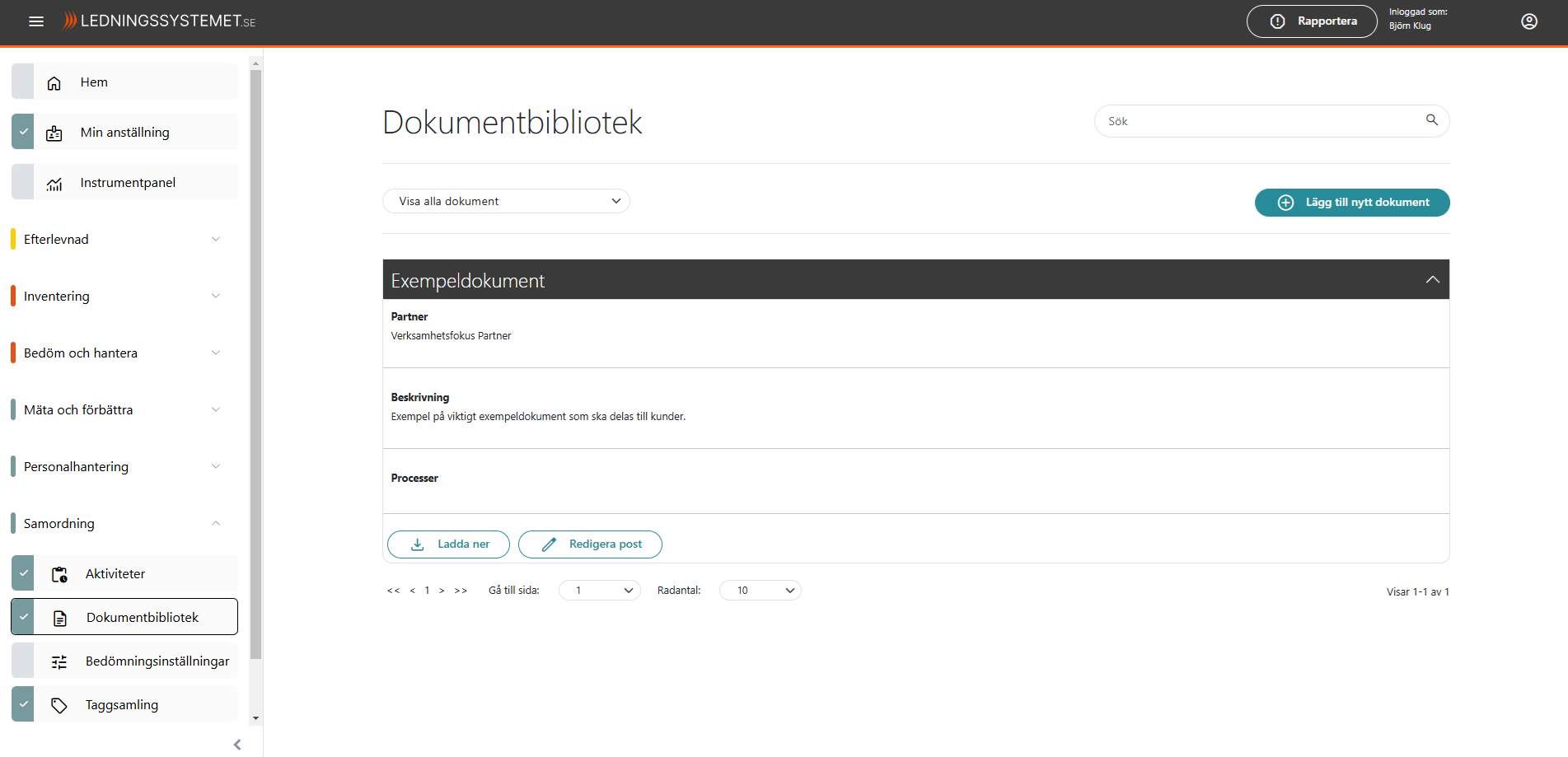For consultants, Ledningssystemet.se is available as a partner portal. Through the partner portal, a consultant can help their customers set up requirement sources, provide properties for object categories, provide risk templates and provide suggestions for relevant and commonly used controls for the consultant’s customers.
For those consultants who wish to disseminate documented material to clients, such as network consultants, there is an option to distribute documents to their clients via the partner portal. These can be newsletters, quality manuals or other documents regularly produced by the partner.
The partner portal is provided to those who wish to use Ledningssystemet.se for their customers and not only assist with consulting support and work in the customer’s instance, but also want to help their customers over time and through a more comprehensive approach. In short, we have identified that consultants quite often identify a need of a customer that is likely to be a need of several customers in the future, such as an updated industry-specific list of mandatory requirements.
A partner link always requires both the customer and the partner to add references to each other’s instances and each party can break the partner link at any time.
Each partner has its own instance and thus data is not shared with other partners. However, the partner portal and partner instances are not offered for operation in their own operating environment.
For groups of companies and corporations
For groups, there are good opportunities to act as a partner for the companies that are part of their own group. For example, the parent company can use the partner portal to ensure that the companies have access to relevant lists of laws, that risks are created for assessment when conditions are met, and that companies in the group take a position on characteristics that are considered particularly relevant to the group.
See more information on the page for Company group and coprporations.
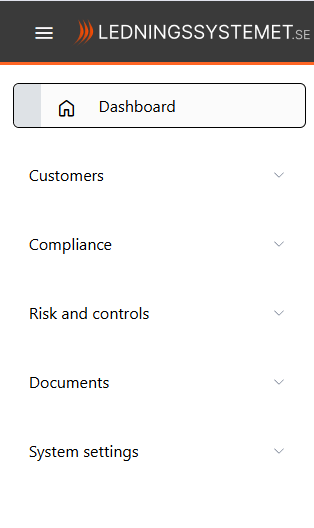
Sources of requirements
Through the partner portal, the consultant can set up and manage requirement sources. Requirement sources are lists of what are regularly requirements or binding requirements of the consultant’s customers. Once the requirement source has been set up, the requirements entered and governance proposals to meet the requirements, these can be provided directly to the client entities that have entered the partner link.
By providing its customers with managed lists of mandatory requirements, the consultant simplifies for the customers and in the context of a certification project, a partner can provide its expertise without what has already been established by several leading to repetitive additional work.
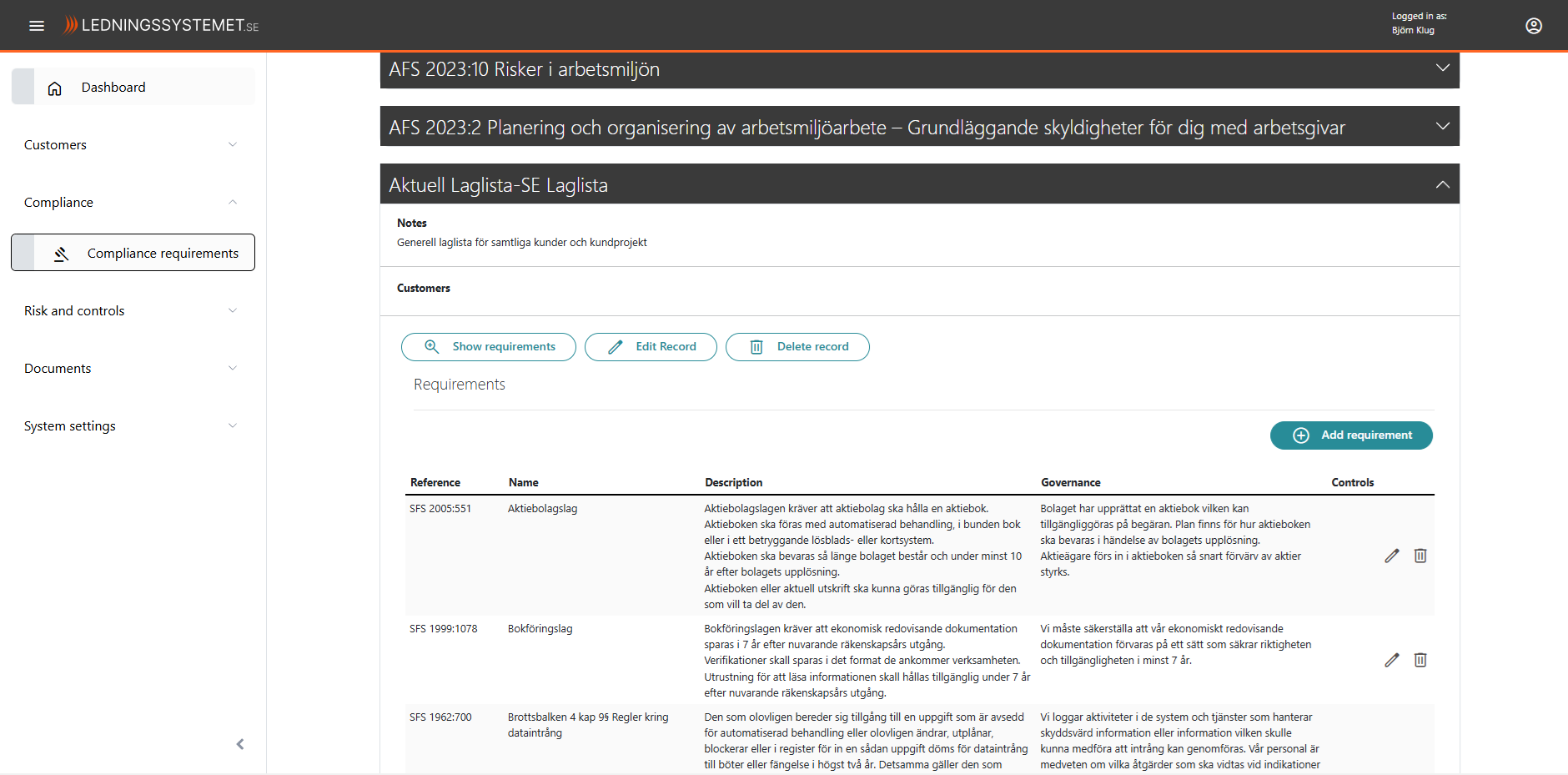
Characteristics
Through the partner portal, consultants can provide additional object properties to their customers. These can be properties that the customer can relate to different types of objects in the customer instance. Object categories from the partner portal are for example Departments, Processes, Activities, Information types, Assets and Suppliers.
In the example, a partner has created additional properties related to Activities on the theme of work environment. When a customer of the partner maps their activities, they can mark that the activity also has characteristics such as working at high altitude or working in severe cold, which in turn may mean that the activity should be subject to risk assessments.
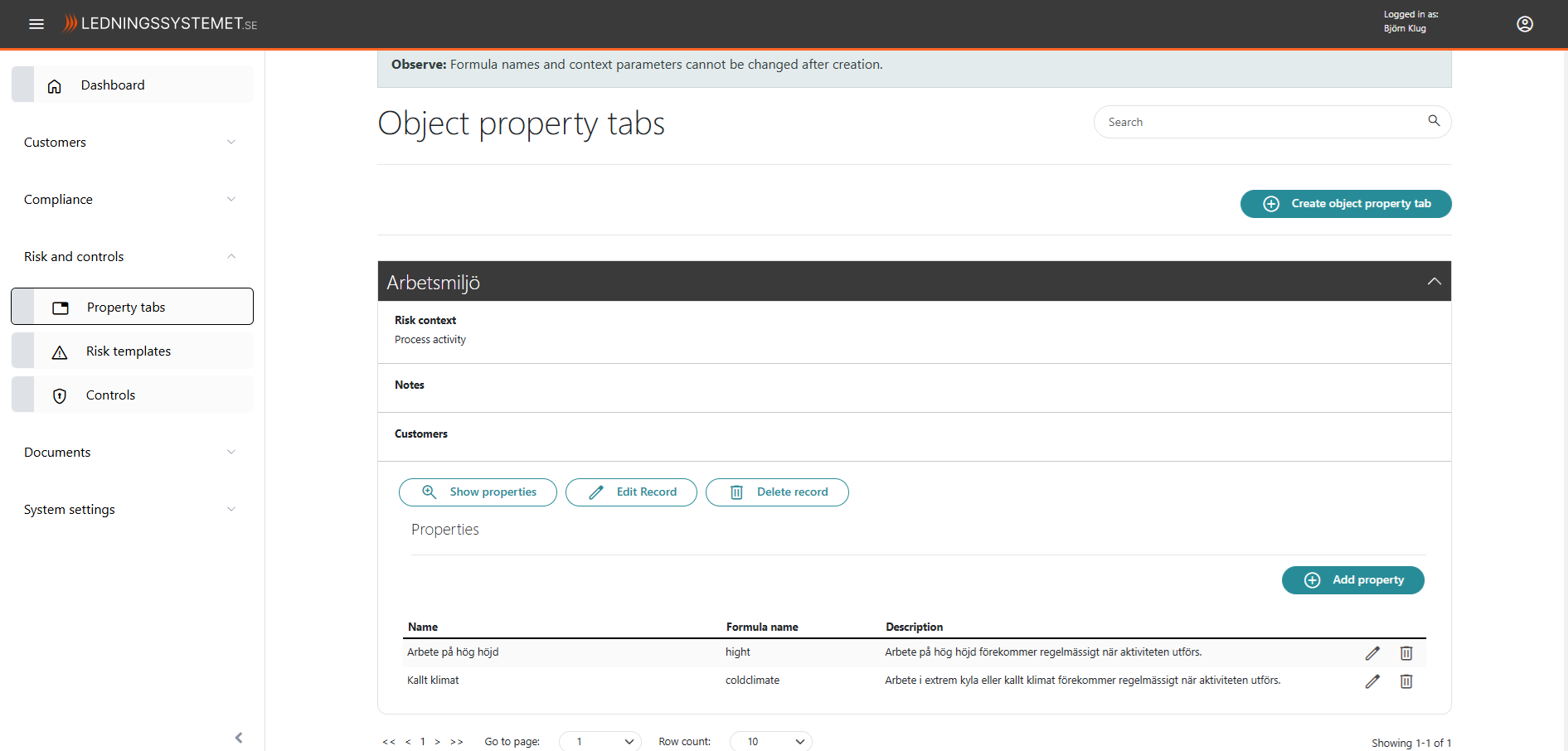
Risk templates
Based on properties that exist from scratch in the customer instance, or based on properties provided by the partner, a partner can create risk templates that are activated in the customer instance when the conditions of the template are met.
The example shows a risk template to be activated if an activity involves working at height. The second image shows how the risk has been activated in the customer instance and is thus ready for assessment.
For consultants working in the field of information security, there are great opportunities to assist customers with risk examples that are activated only when conditions are met. For example, when information is handled in cloud services, when a new supplier acts as a data processor or why not when the business enters into a security protection agreement within the framework of an activity.
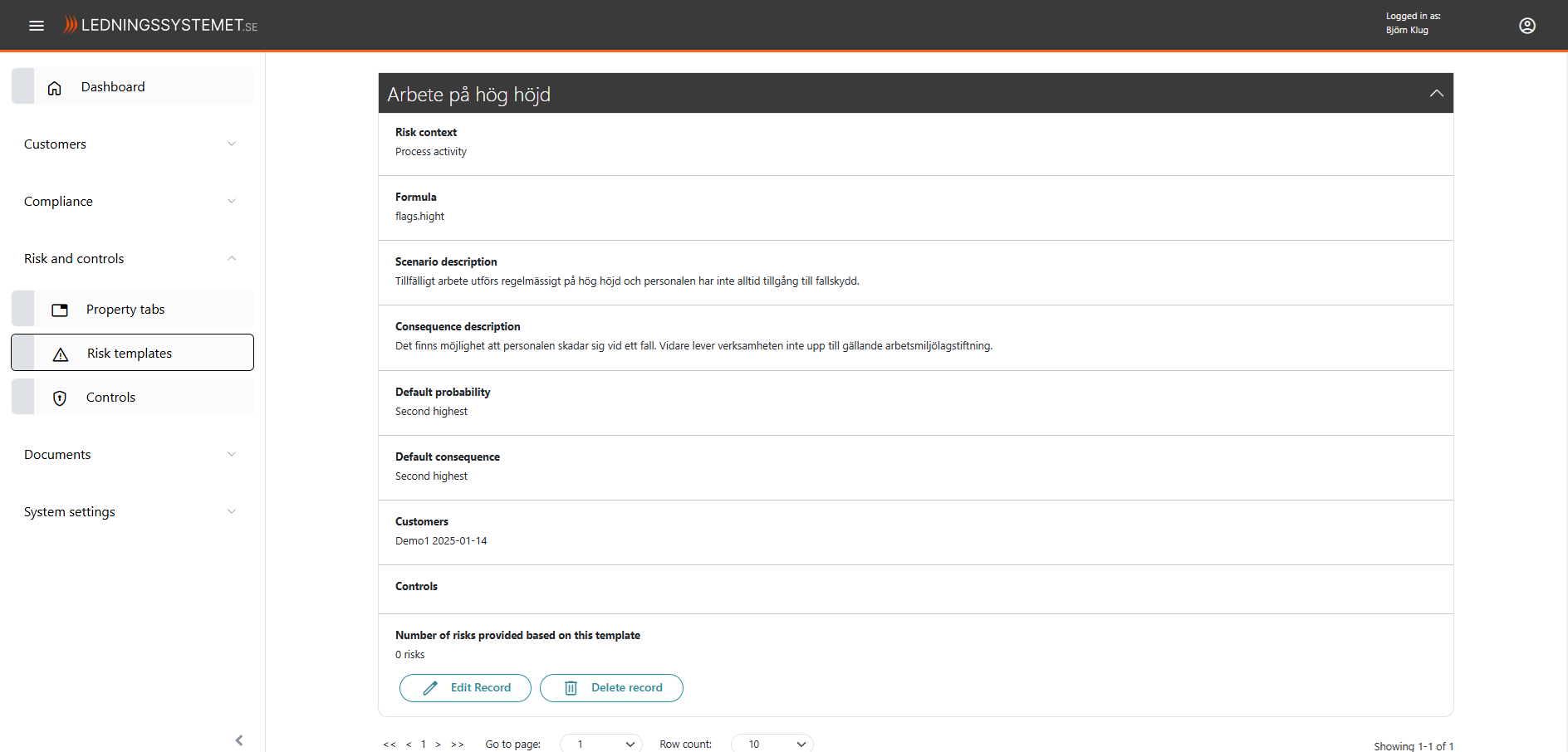
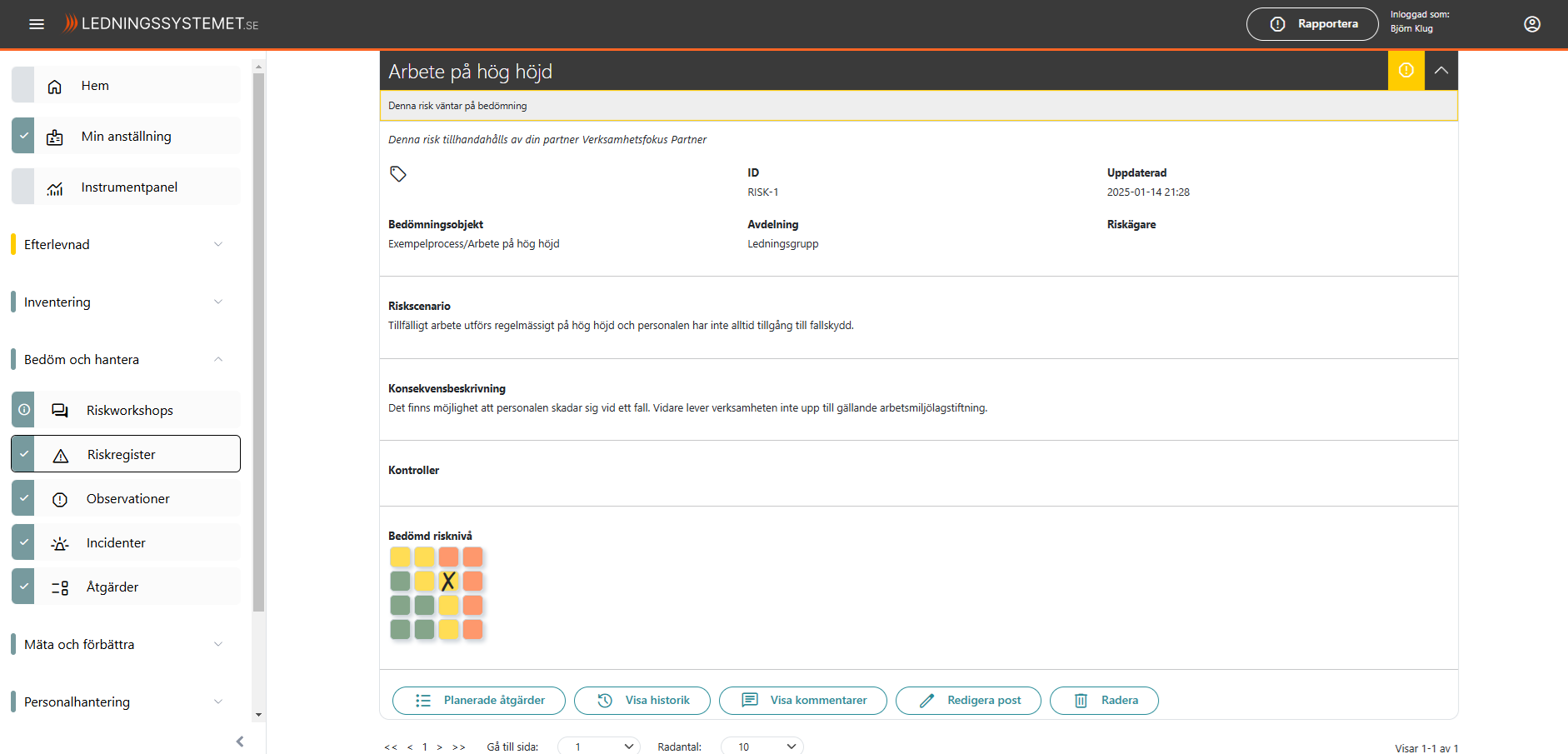
Controls
Through the partner portal, consultants can provide commonly used controls and security measures. Controls can already be linked in the partner portal to requirements in requirement sources and risk templates. This relationship then follows to the customer portals that consume the partner’s services via the partner portal.
The example shows a proposed control measure that the partner has created and how the control in the customer instance has been created and related to a risk.
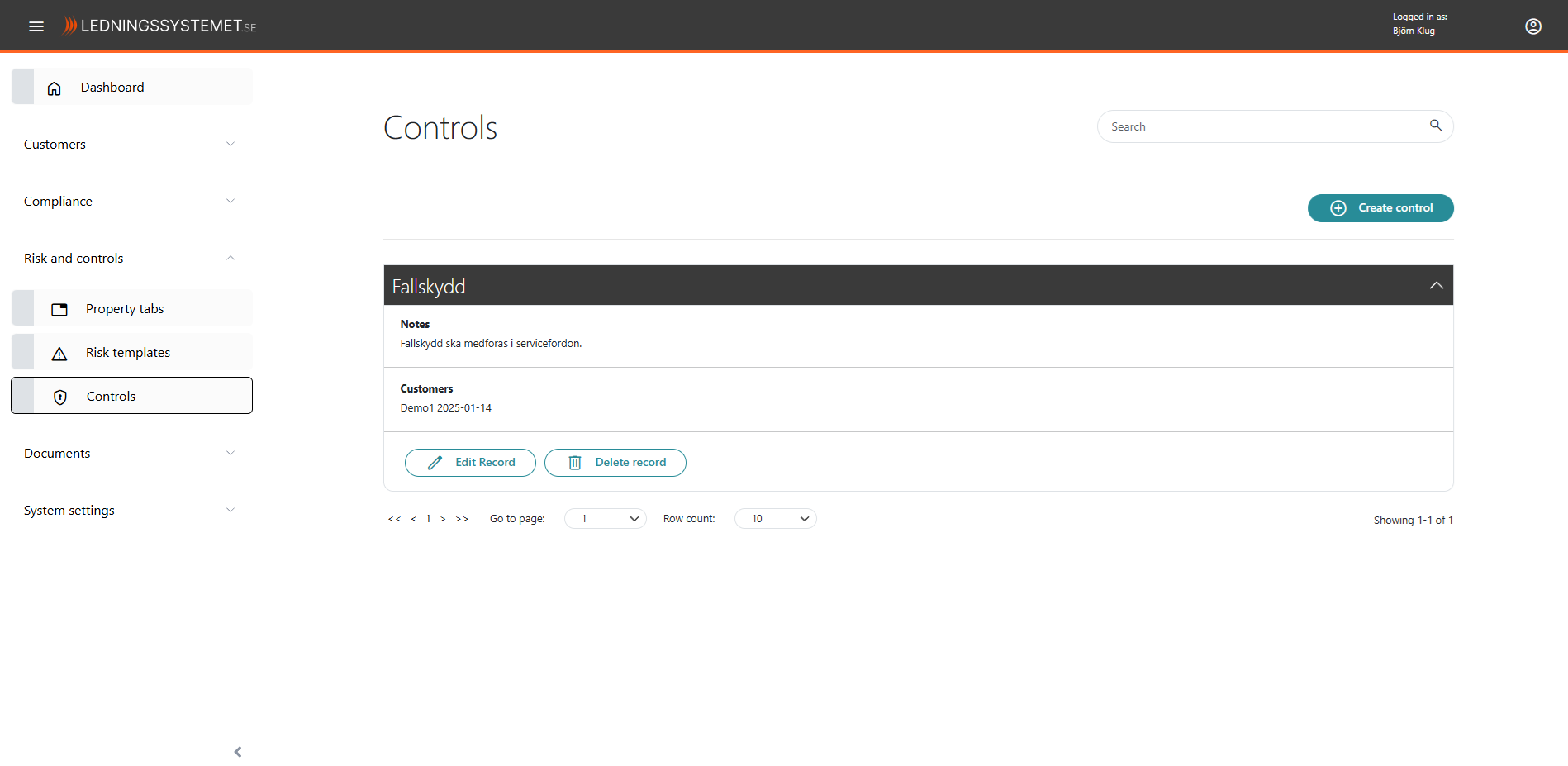
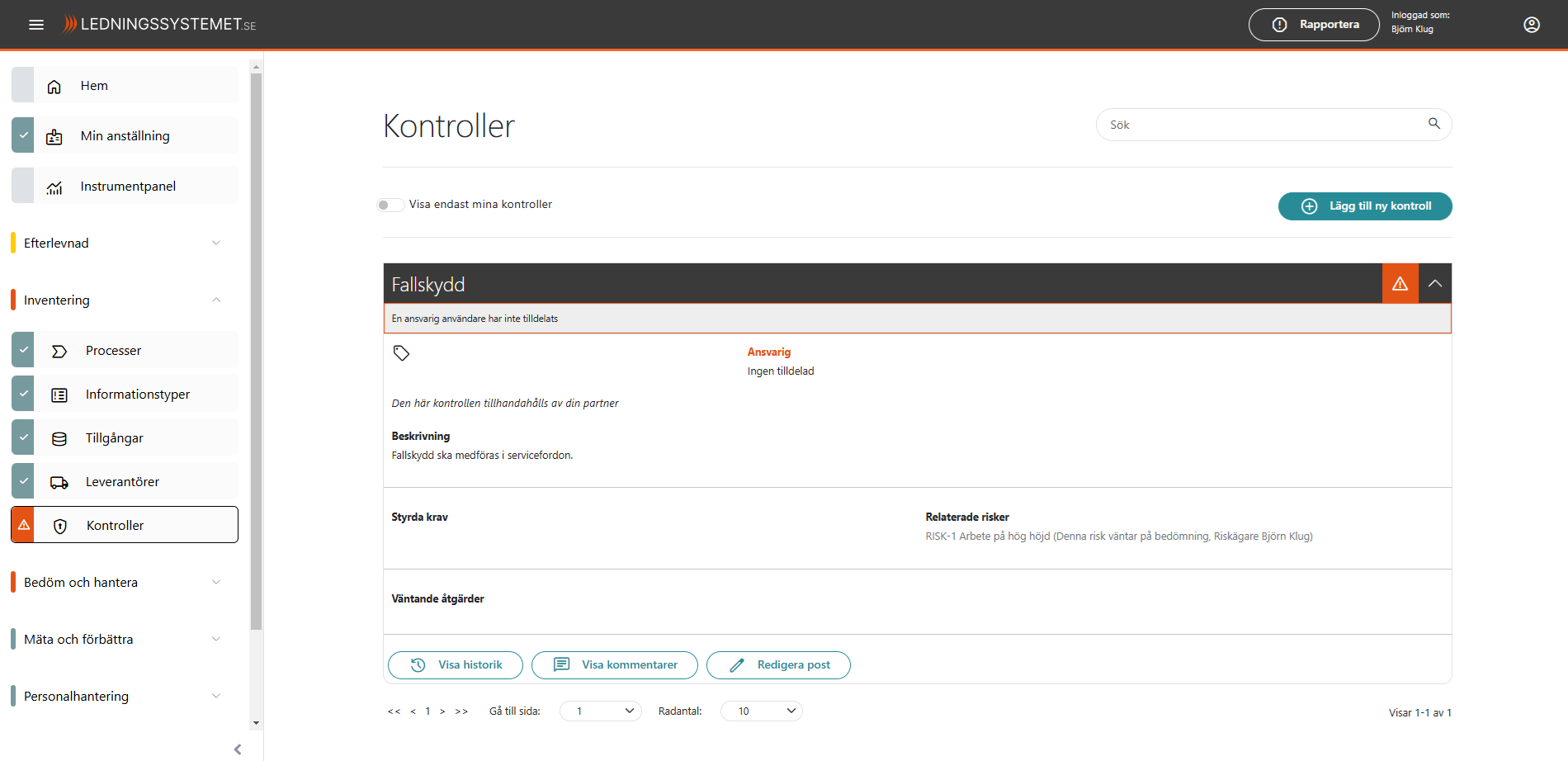
Documents
Through the partner portal, a consultant can share standard documentation with their customers. This could be quality manuals, procedures, working methods, examples of business continuity plans or even newsletters.
The function can be particularly relevant for those consultants who offer their customers network certification and where it is possible to coordinate the common mandatory documentation and ensure a common framework through Ledningssystemet.se.
The example shows how a document is set up in the partner portal and how it is displayed in the customer instance.
